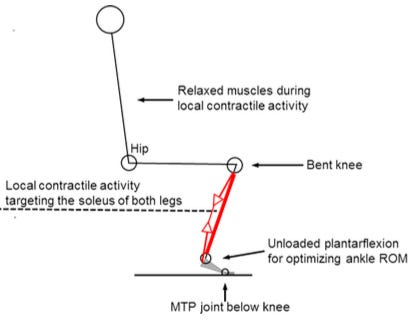Move
How much should you move per day?
The minimum amount you should move depends upon the amount of carbohydrates you consume per day. If you recall from an earlier section in this manual, excess carbs are associated with increased glycation of your tissues, and increased blood levels of the saturated fat, palmitic acid, both of which have deleterious health consequences.
The first 110 to 140 g of carbs you consume each day are basically freebies, as your brain and nervous system will burn that amount each day, even if you are completely sedentary. However, if you consume more carbs than this, you should either:
Burn those extra carbs by moving your body, keeping in mind that each gram of carbohydrates contains 4 kilocalories. So, for example, if you consume 200 g of total carbs per day, which is about 75 g above your basal needs, you should burn approximately 4 * 75 = 300 extra calories per day. 300 calories is equivalent to walking about 7,500 steps.
Or, alternatively, if you are relatively inactive, you should obtain your extra carbs from lower glycemic sources like legumes, fruits, and vegetables, rather than higher glycemic sources like grains, tubers, and fruit juices.
Of course, you can also do both 1 and 2 above, for maximal benefit.
As further evidence of this concept, consider the physiology of glycogen, the storage form of glucose in your liver and muscles. When an individual goes on a very low carbohydrate ketogenic diet, in addition to making ketones, the body must create its own glucose. It does this by breaking down muscle, and, to a lesser extent, fat. Some of this newly manufactured glucose is simply burned as fuel, but some of it is linked together to form glycogen, the storage form of glucose. Glycogen is shuttled to your muscles, where it serves as a fast-burning form of energy. What is interesting about this whole process is that, when you are on a ketogenic diet, your body does not refill the glycogen stores in your muscles to 100%. It only fills up your muscle reserves to about 50%. Why not 100%? Why not give the muscles all the glycogen they can store, in case you need to run away from a bear or something? The theory is that glycogen storage in the muscle is not just to benefit your muscle, but also to benefit your body. It benefits your body because it serves as a buffer, as a place where excess glucose can be quickly dumped, preventing high levels in your blood. It’s a genius system, that works whether or not you are on a ketogenic diet, but it only works if your muscles are not already loaded to capacity. Your body is hoping that you will eventually start moving, burning up your muscle glycogen before you get to 100%. By the way, this concept also underscores the importance of having decent muscle mass. The more muscle mass you have, the larger your buffer system.
As far as increasing movement during the day, here are a few specific tips:
Take short walks. The ideal time to walk is not right after you finish eating, but rather about 30 minutes afterward. This will best dampen spikes in blood glucose. At least, that is what one study showed.1 You can always use a continuous glucose monitor to test your own physiology. Stuck inside? Do air squats instead.2
When sitting, do calf raises, also known as soleus push-ups. The soleus muscles in your calves are particularly adapted to burn glucose.3 To maximally activate them, keep your knees at slightly less than 90 degrees:
When driving, or lying on the couch, perform alternating glute squeezes.4
https://pubmed.ncbi.nlm.nih.gov/30428521/
https://pubmed.ncbi.nlm.nih.gov/38629807/
https://pubmed.ncbi.nlm.nih.gov/36034224/
https://pmc.ncbi.nlm.nih.gov/articles/PMC6622157/


